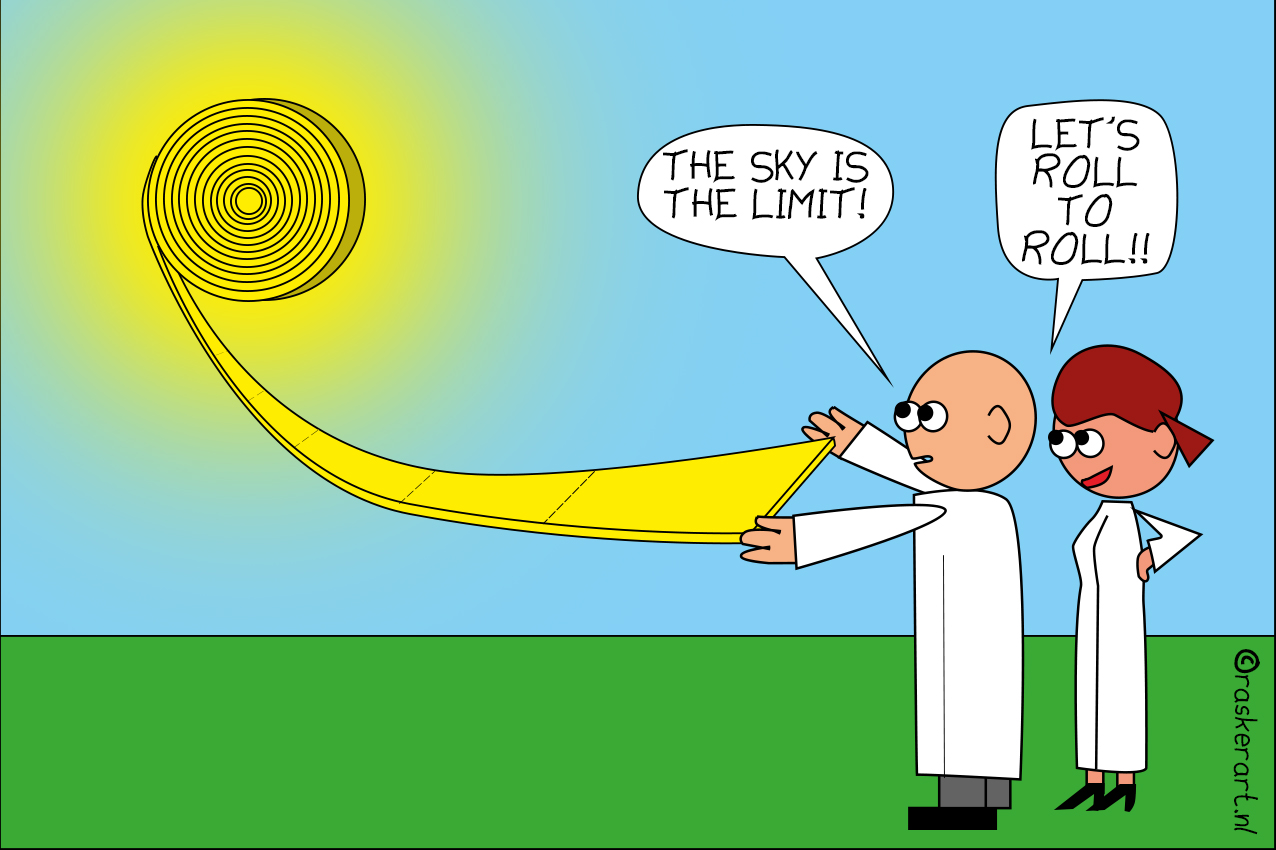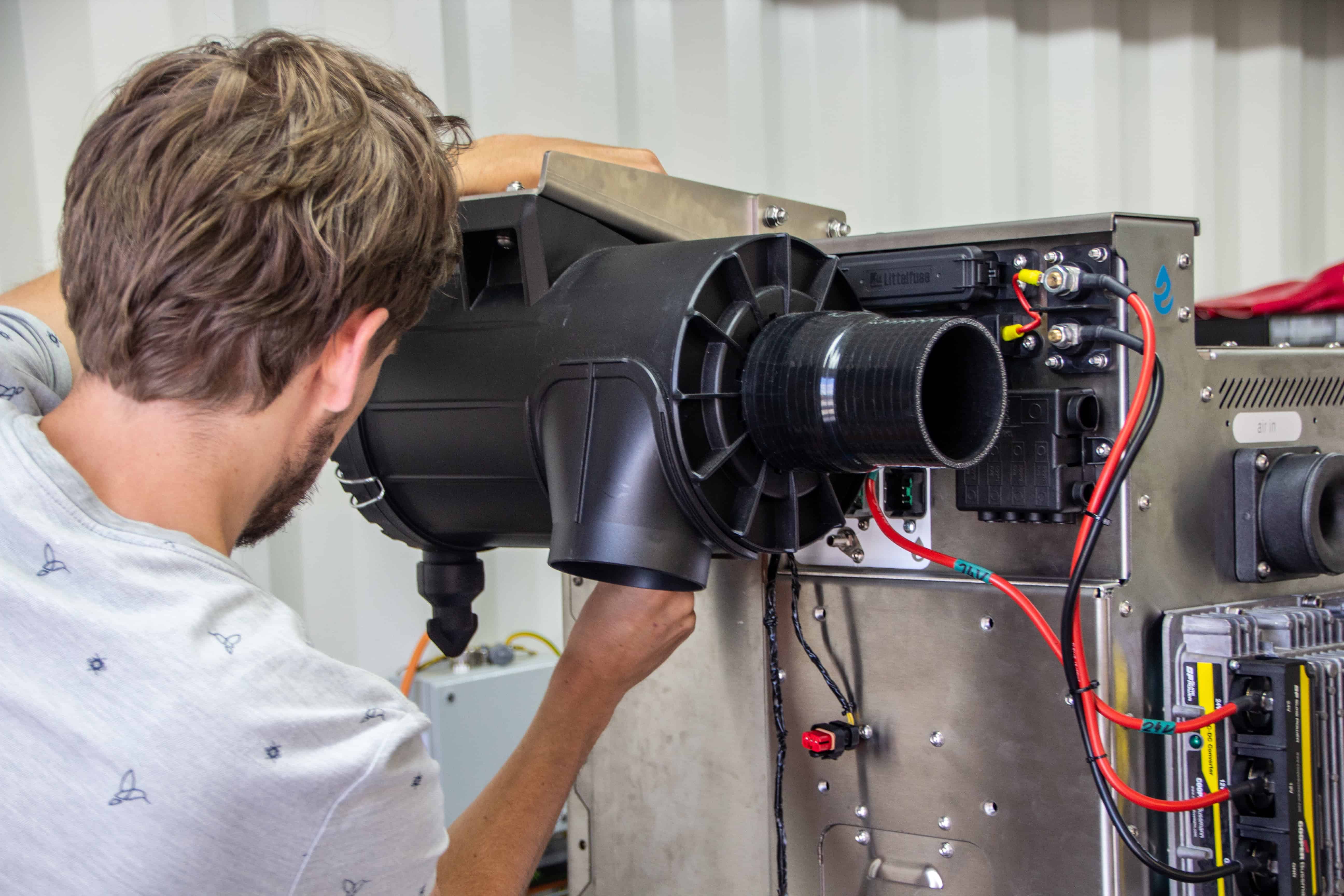
“We do not see perovskite solar cells as a replacement for silicon solar cells,” says Niels van Loon. He has worked for 15 years at the Netherlands Organisation for Applied Scientific Research (TNO) as a techno-economic modelling specialist, among other things, and since 2015 has been responsible for communications within Solliance Solar Research consortium. In that consortium, parties such as TNO, imec, TU Eindhoven, Forschungszentrum Jülich, University of Hasselt, TU Delft, University of Twente and University of Groningen all work together on thin-film solar cell and module technologies.
As part of that partnership, TNO has been working on perovskite solar cells for about six years now. “It is precisely due to this collaboration that we are reaping the benefits. We have been able to make great strides in making fantastic solar cells from that material.”
Tinted glass
Perovskite is a mineral with the same crystal structure as calcium-titanium-oxide. It occurs in rocks, and the raw materials to make this new semiconductor are cheaper than silicon cells. Moreover, only a thin layer is needed for a solar cell, which means lower material costs.
According to Van Loon, you have to take a good look at what the application is and then choose the best technology. “That also holds true for solar panels. For large rigid surfaces, silicon is often a good solution. But if you have very curved roofing material, such as a tiled, corrugated or aesthetic roofs, then a flexible panel is the most obvious choice. Or windows with integrated solar cells.”
For example, you can make holes in a solar panel made of perovskite without compromising the performance of the rest of the panel, van Loon explains. “If you make a pattern of holes about 0.01 millimeters in diameter, you can no longer see them with the naked eye. It looks like tinted glass, except that you convert some of the light into electrical energy. You just look through it. We are currently working on a prototype.” Solliance partners have collaborated in several projects to install solar panels in crash barriers, walls of buildings and on a bicycle path.
You can also combine silicon and perovskite, which yields even higher efficiencies, Van Loon adds. That’s the idea behind the EU-funded PERTPV project. A so-called tandem technology that combines different solar cells in a tandem solar module, or tandem PV module. This theoretically makes an efficiency of more than 40 percent possible. In such a tandem solar cell, one solar cell performs optimally on light with a short wavelength. The other one on light with a longer wavelength. This combination makes it possible to extract more electrical energy from sunlight than a single solar cell.
Affordable
“We are not only focusing on the question of how to make a stable and efficient cell,” says Sjoerd Veenstra. He is program manager perovskite solar cells at TNO and coordinator of the perovskite activities at the Solliance consortium. “For us, it’s also about scaling up the production technology. Not just making a few good cells, but developing a process to produce affordable flexible panels. That you can integrate into buildings, for example.”
Steps have been taken at TNO in the development of flexible perovskite solar cells with the pilot roll-to-roll installation. This involves producing the solar cells on a roll, just like a newspaper is printed. “We are also carrying out technical and economic calculations. We expect that prices can come down even further if there are large factories for that roll-to-roll production.”
Magic word
At the moment, TNO is building a pilot line at the Brainport Industry Campus where “mass customization” is possible. “A magic word,” Van Loon states. “What it comes down to is that on the one hand , we harness the advantages of mass production, such as robotization and low-cost production technologies. We want to make the process ‘smart’ so that you digitally set up the production line in advance in a way that allows you to produce a solar panel with specific properties.” By predetermining the dimensions or electrical properties, for instance. Visual integration can also be into account. “With this pilot line, we can make semi-finished solar panel products that we can easily integrate into, for example, the roof of a car or a facade of a building.”
Eindhoven University of Technology (TU/e) is also conducting research within the consortium on solar cells made of perovskite. Professor Adrianne Creatore is researching how to properly pack perovskite cells so that they become more stable. Her colleague professor René Janssen is working on triple layer cells made of three layers of perovskite, which will lead to even higher efficiency.
Read more about the Solliance consortium here.








